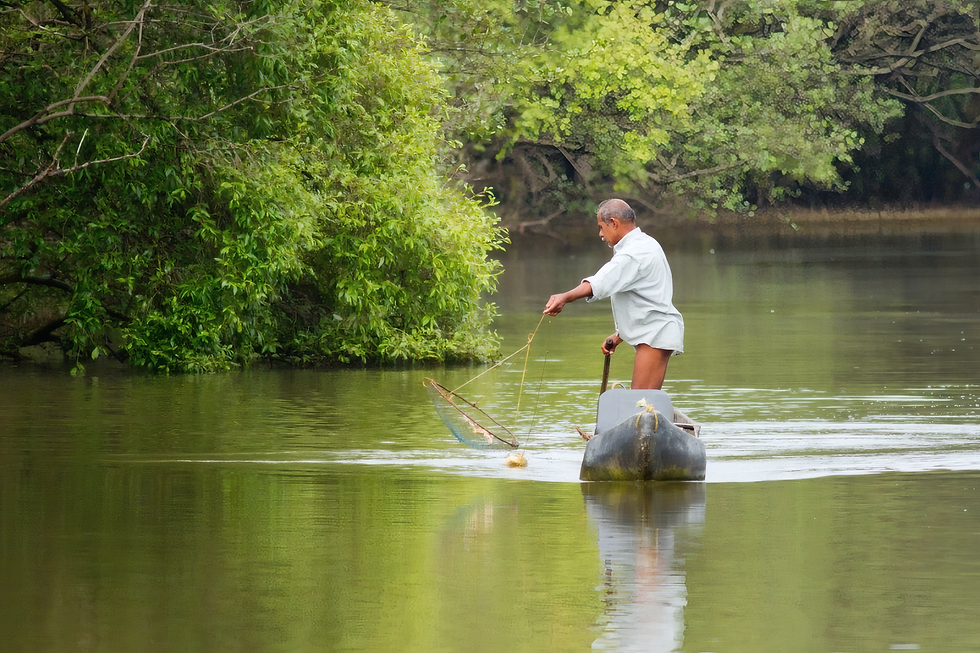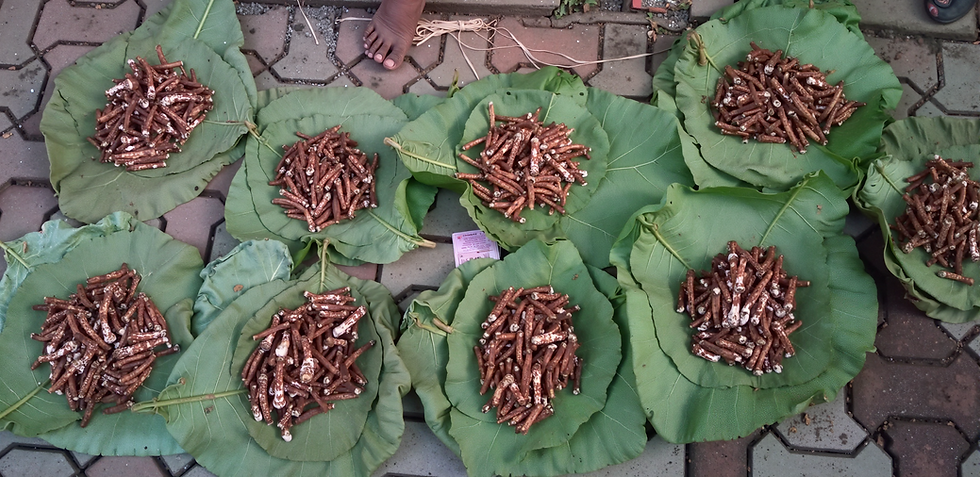The Enduring Legacy of Teen Manos: Discovering Aldona's Monsoon Magic
- Whispering Cafe & Store

- Jun 30
- 3 min read

Nestled in the lush embrace of North Goa, the village of Aldona is more than just picturesque landscapes and charming architecture. It's a living testament to centuries of rich cultural heritage, where ancient wisdom still shapes daily life and, most deliciously, the unique seasonal monsoon cuisine. While the world often flocks to Goa's sun-drenched beaches, Aldona invites you to delve deeper, to uncover a secret whispered by the tides: the incredible Khazan system and its vital heart, the Teen Manos.
An Ancient Engineering Marvel: The Khazan System
Imagine a sophisticated, community-managed ecosystem that has sustained coastal Goa for over a millennium. That's the Khazan system – an ingenious network of bunds (dykes), canals, water bodies (poiems), and special sluice gates known as 'manos'. Often hailed as an "engineering marvel," this system ingeniously reclaims low-lying brackish lands, allowing them to flourish with both agriculture and aquaculture. It's a masterclass in coexisting with nature, not conquering it.
At the very core of this system in Aldona lies Teen Manos – literally, "Three Sluice Gates." Located strategically on the banks of the Mapusa River, it's one of eleven such systems connected to the river, playing a pivotal role in regulating water flow, controlling salinity, and nurturing the land.
A Dance with the Tides: How Teen Manos Works

The magic of Teen Manos lies in its precise, manually operated gates. During high tide, these sluice gates are carefully closed, blocking saline river water from flooding the precious paddy fields. As the tides recede, the gates open, allowing controlled drainage and ensuring freshwater remains for irrigation. This meticulous process isn't just about farming; it's a multi-faceted system:
Salinity Control: Crucial for growing salt-tolerant rice varieties like Korgut.
Irrigation: Providing essential water, especially during dry spells.
Flood Management: During heavy monsoons, Khazan lands act as natural "stormwater storages," protecting both fields and villages.
Aquaculture: The 'poiems' upstream serve as vital nurseries for estuarine fish and prawns, supporting traditional fishing.
The outer bunds, often reinforced with mangroves, act as natural wave breakers, while inner bunds protect soil fertility. It's a truly integrated system, demonstrating a profound understanding of hydro-ecological dynamics.
More Than Just Infrastructure: Aldona's Beating Heart
Teen Manos transcends its functional design; it's a vibrant, living monument deeply embedded in Aldona's socio-cultural fabric. Locals gather here for daily fishing, quiet relaxation, and to soak in the breathtaking sunsets. It's a cherished community space, a repository of collective memory, and a focal point for celebrations.
Most notably, Teen Manos comes alive during the Sao Joao festival, a riot of color and joy where villagers, adorned with handmade floral crowns, leap into the waters, engaging in rain dances and sharing Goan delicacies. It's this deep connection that has even put Teen Manos on the map for offbeat travel guides, inviting visitors to experience authentic Goan life.
From Water to Plate: Aldona's Culinary Riches

The genius of the Khazan system directly translates to Aldona's legendary "farm to table" experience, especially evident in its seasonal monsoon cuisine. These reclaimed lands have historically been the "granaries of rice" for countless families, producing staple crops that are central to the Goan diet.
But it's not just rice. The bunds host a variety of vegetables, coconuts, and fruits. And then there's the fish! The sluice gates are prime spots for traditional fishing, yielding 'manshechem nustem' – natural, chemical-free, and incredibly tasty fish like chonak (barramundi), palu (sandrig), and shevto (mullet). This harmonious blend of agriculture and aquaculture ensures a continuous supply of fresh, local ingredients, defining the very essence of Aldona's unique culinary identity. During the monsoon, when the fields are flushed clean, the bounty from these waters becomes a true seasonal delight.
Facing the Tides of Change: A Call to Preserve

Despite its enduring legacy and profound benefits, the Khazan system, including Teen Manos, faces significant challenges. Post-liberation shifts in management, a decline in community ownership, and the erosion of invaluable Traditional Ecological Knowledge (TEK) have led to widespread neglect. As local fisherman Manuel "Manu" Alemao poignantly notes, "People don't venture into the rivers like before... there is no maintenance of the banks." The use of less durable modern materials for repairs further compromises the system's integrity.
Preserving Teen Manos and the Khazan system is not just about maintaining an old structure; it's about safeguarding Aldona's unique cultural identity, its food security, and a sustainable way of life that has thrived for centuries. It's a call to re-empower local governance, revive traditional knowledge, and ensure that this "crumbling heritage ecosystem" is restored to its former glory.
Aldona truly offers a unique blend of history, nature, and community spirit, all intertwined with the life-giving waters managed by Teen Manos. Have you ever experienced the unique flavors of Goan monsoon cuisine, or discovered a hidden gem like Aldona's Teen Manos? Share your thoughts below!






Comments